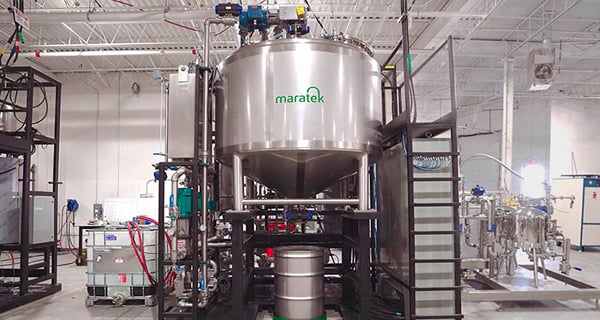Driving Color Trends: An Insight into the Automotive Paint Industry and Market
 From Henry Ford's pioneering assembly line to the latest advancements in electric and autonomous vehicles, the automotive industry has been at the forefront of innovation, shaping the way we live, work, and travel. The automotive paint industry and market is a dynamic landscape of innovation and consumer preferences, that continuously shapes the visual appeal of vehicles worldwide. In this comprehensive exploration, we delve into the nuances of automotive paints, from their historical roots to the latest trends driving the market.
From Henry Ford's pioneering assembly line to the latest advancements in electric and autonomous vehicles, the automotive industry has been at the forefront of innovation, shaping the way we live, work, and travel. The automotive paint industry and market is a dynamic landscape of innovation and consumer preferences, that continuously shapes the visual appeal of vehicles worldwide. In this comprehensive exploration, we delve into the nuances of automotive paints, from their historical roots to the latest trends driving the market.
The Evolution of Automotive Paints
The journey of automotive paints began over a century ago when cars were hand-painted with basic oil resin-based paints. However, as automotive technology advanced, so did paint formulations. The introduction of spray-painting techniques in the 1920s revolutionized the industry, shortening painting time, exponentially improving mass production. Over time various paint formulas were developed. Examples like durable, weather-resistant coatings such as acrylic enamel and urethane revolutionized automotive painting. These innovations not only enhanced aesthetics but also provided protection against rust, corrosion, and UV damage. Fast forward to the 21st century, and the automotive paint industry stands at the forefront of technological innovation. Water-based paints, introduced to address environmental concerns, have become increasingly prevalent, offering lower VOC (volatile organic compounds) emissions and improved sustainability without compromising on quality or durability.
Market Dynamics
The automotive paint market is a dynamic ecosystem influenced by a myriad of factors, including consumer preferences, regulatory requirements, technological advancements, and economic conditions.
Consumer Preferences
Consumer tastes play a pivotal role in shaping the automotive paint market. From classic metallic finishes to vibrant custom colors, consumers seek personalization and individuality in their vehicle's appearance. This demand for customization has prompted automakers and paint manufacturers to offer a wide range of color options and specialty finishes, catering to diverse preferences.
Technological Advancements
Advancements in paint chemistry and application techniques have revolutionized the automotive paint industry. From advanced color-matching systems to robotic paint application technologies, manufacturers are constantly striving to improve efficiency, quality, and consistency in the painting process. Nanotechnology, for instance, has enabled the development of advanced nano coatings that provide enhanced durability and ease of maintenance.
Economic Factors
Economic factors such as consumer purchasing power, GDP growth, and automotive production levels influence the demand for automotive paints. Economic downturns may lead to a slowdown in vehicle sales and, consequently, a decline in paint consumption. Conversely, periods of economic prosperity often coincide with increased automotive production and higher demand for paint products.
Sustainability
Stringent environmental regulations have significantly impacted the automotive paint industry, driving the adoption of eco-friendly formulations and manufacturing processes. Regulations governing VOC emissions, hazardous air pollutants, and waste disposal have spurred innovation in low-emission coatings and sustainable practices, shaping the future of automotive painting.
Sustainability has emerged as an important theme in the automotive paint industry, driven by environmental concerns and consumer demand for eco-friendly business practices. One way that automotive paint shops can work to be more environmentally friendly is through implementing solvent recovery. During the painting process spray guns are typically used for paint application. Solvents are typically used to clean these guns and their lines. By using solvent recovery and recycling systems the waste solvent from the cleaning process can be purified and recycled allowing the solvent to be reused. Equipment like Maratek’s solvent saver series can help automotive paint shops reduce their environmental impact and save money on purchasing virgin solvents.
The automotive paint industry and market are dynamic and ever evolving, driven by innovation, consumer preferences, and sustainability. From humble beginnings to innovative technologies, automotive paints have undergone a remarkable evolution, shaping the visual landscape of vehicles worldwide. As sustainability and arising trends continue to drive evolution in the automotive industry, the future of automotive paints promises to be vibrant, innovative, and environmentally conscious. Whether it is a classic metallic finish or a futuristic nano coating, automotive paints will continue to play a pivotal role in defining the aesthetics and identity of vehicles for generations to come.
Resources:
Types Of Automotive Paint: What Is Best For My Car? (paintforcars.com)
The Low VOC Lowdown: The DIYer's Guide to Low VOC Automotive Paint - OnAllCylinders
The History of Sprayguns - BodyShop Business
A Brief History of Automotive Coatings Technology — American Coatings Association (paint.org)





